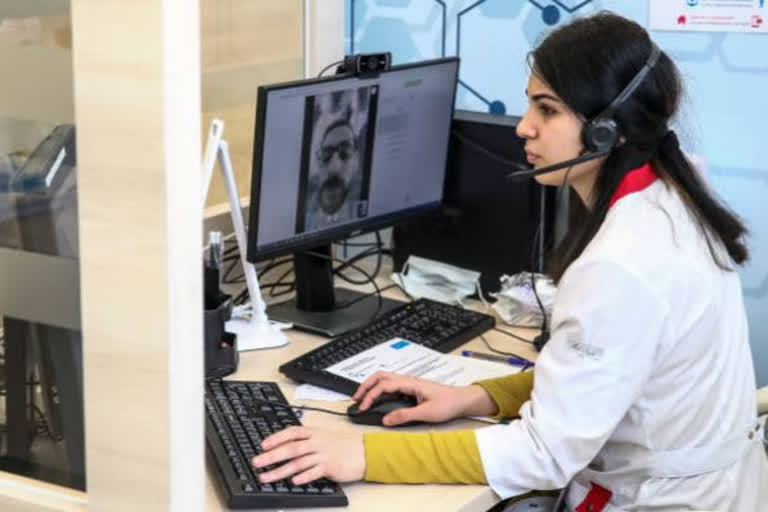Hyderabad: As people across India have been put under a 21-day lockdown restricting movement and social meetings after the Covid-19 outbreak, telemedicine has started gaining immense popularity as it is helping patients connect with doctors by means of telecommunications technology.
Virtual interactions over calls, texts and video conferencing – which earlier used to be exceptions or one-offs – have now become the new reality of these times.
People are taking up to apps and digital platforms like Practo, DocsApp and mfine for virtual consultations with medical practitioners at prices that start at as low as Rs 199 per consultation. Even local physicians are now connecting with existing patients through phones and messages, with digital payment infrastructure lending sustainability to the practice.
Some of the major Indian private sector players – like Narayana Hrudayalaya, Apollo Telemedicine Enterprises, Asia Heart Foundation, Escorts Heart Institute, Aravind Eye Care, among others -- have also started focusing on telemedicine realising its scope and benefits. They are functioning with support from the governments and from organizations like ISRO who guide them with appropriate and updated technology.
Experts believe that in a country where the current doctor-population ratio is only 0.62:1000 as compared to the World Health Organization’s recommendation of 1:1000, telemedicine can play a huge role in plugging this deficit.
Read more:Wondering why auto majors producing ventilators? Here is an answer
Telemedicine not only reduces travel expenses, saves time, cuts medical costs, provides easier access in rural areas to specialist doctors, but also makes the life of healthcare providers easy by decreasing the load of missed appointments, increasing revenue and patient load and improving follow-up and health outcomes.
A 2019 report released by McKinsey Global Institute (MGI) estimated that the implementation of telemedicine technology could save India $4 billion to $5 billion every year and replace half of in-person outpatient consultations in the country. “… The technology could save India $4 billion to $5 billion while also enabling people in rural areas to reduce their dependency on unqualified medical practitioners and save time and money spent in travelling to nearby cities to obtain expert advice,” it had said.
However, in spite of having so many promising traits, telemedicine is yet to reach its full potential due to a lack of support for technological infrastructure, poor compensation for medical practitioners and concerns for patient privacy.
Lack of awareness and acceptance of the new technology, both by the public and professionals, and barriers of physical examination of patients are also holding telemedicine back.
But the coronavirus outbreak has still given the practice a much-needed boost in the country. As the current situation tells us, telemedicine may remain the mainstay of health care for months to come. It would not be surprising then to see critical investment coming in the telemedicine sector, both by the private sector and the government, in order to build the necessary infrastructure to capitalize on this momentum and keep telemedicine popular even once the pandemic is over.
(ETV Bharat Report)
